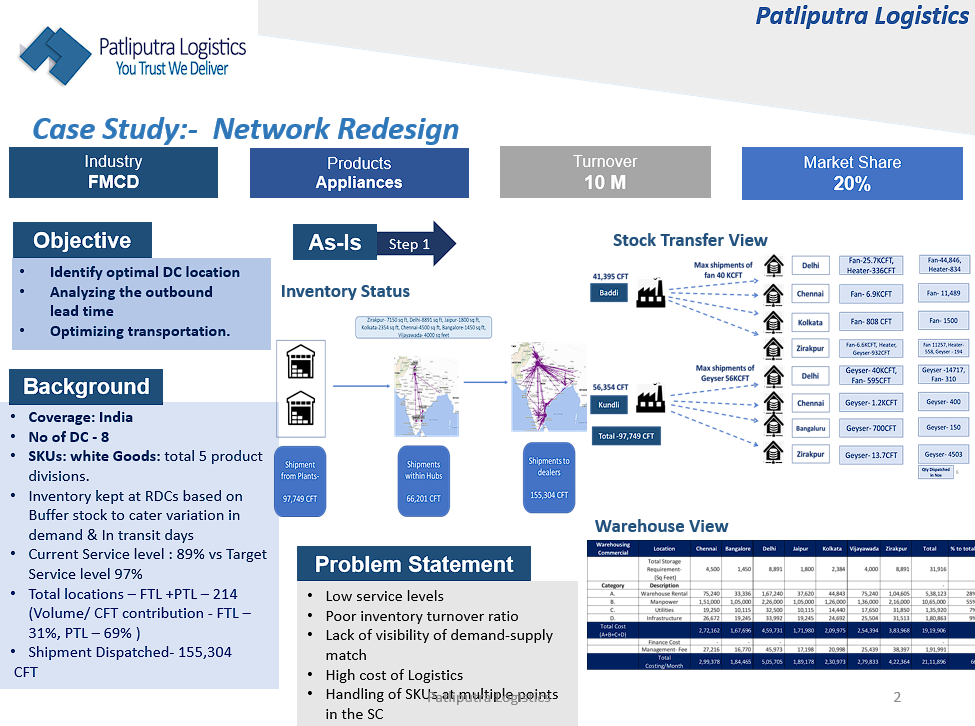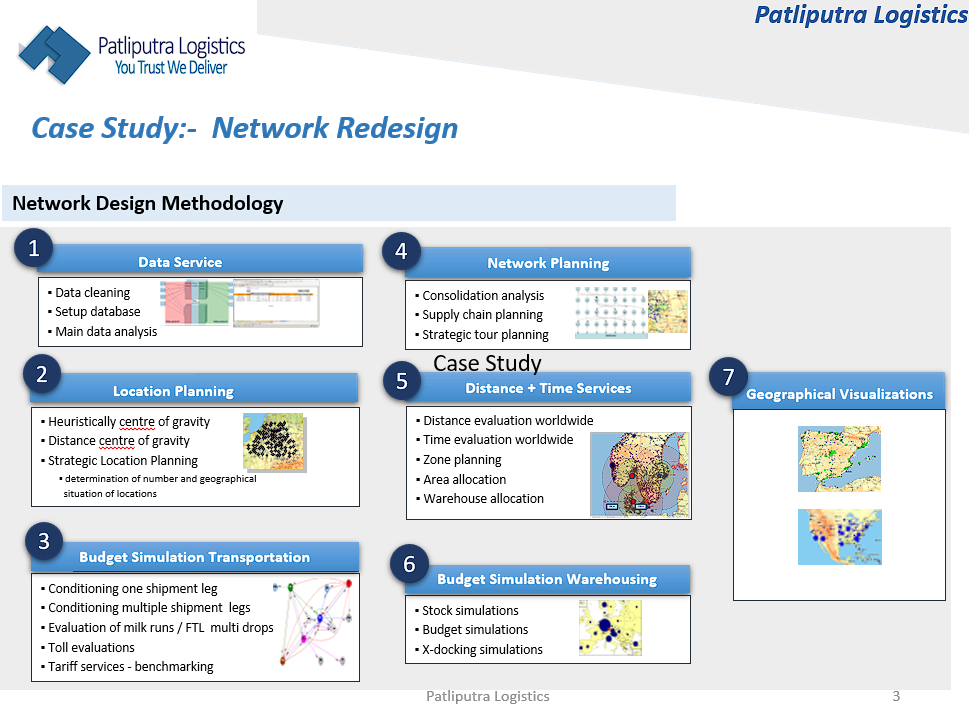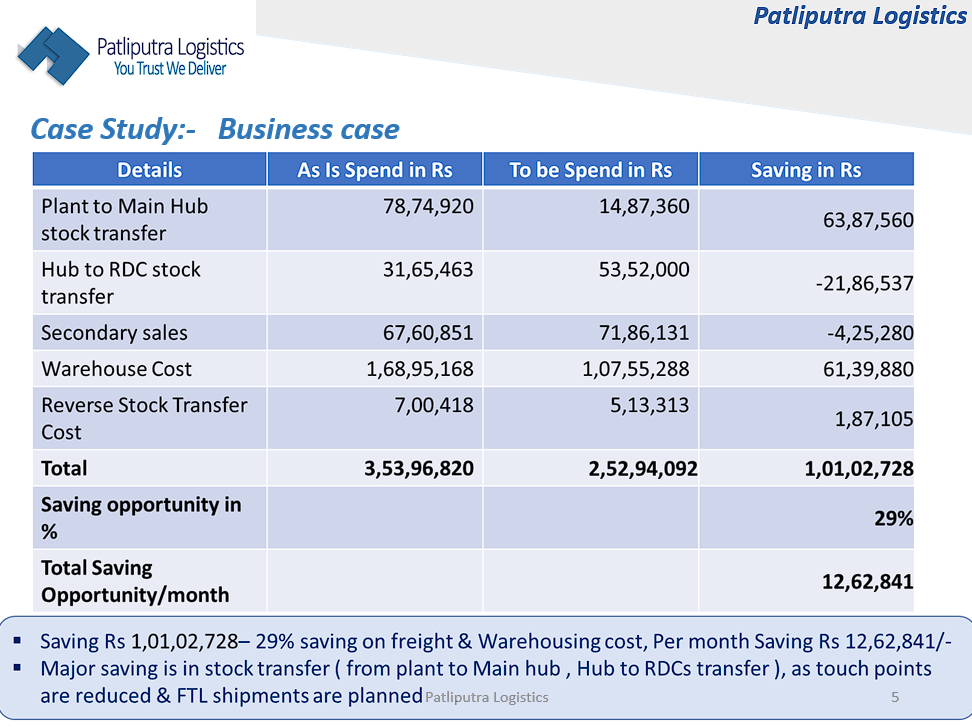Network redesign in supply chain management involves reconfiguring the structure of a company’s supply chain to improve its efficiency, responsiveness, and overall performance. This process typically includes changes to the network’s distribution centers, production facilities, transportation routes, and inventory levels.

Understanding Problem
The first step in supply chain network redesign is to comprehensively analyze the existing supply chain process. This involves identifying inefficiencies, such as high transportation costs, excess inventory levels, and long lead times. Understanding these issues is crucial as it provides insights into the areas that need improvement. By gaining a clear understanding of the current supply chain challenges, companies can develop effective strategies for redesigning their network to achieve greater efficiency and cost savings.
Network Design Methodology
After understanding the current challenges, the next step in supply chain network redesign is to develop a methodology for designing the new network. This involves determining the optimal number and location of facilities, such as warehouses and distribution centers, as well as the most efficient transportation routes. Network design software and mathematical modeling techniques are often used to analyze various network configurations and identify the best solution based on factors such as cost, service levels, and flexibility. The goal is to create a network that is agile, cost-effective, and able to meet customer demands efficiently.


Network Design
With the methodology in place, the actual design of the supply chain network can begin. This step involves making decisions about the number and location of facilities, the transportation routes between them, and the inventory stocking policies. Factors such as customer demand patterns, lead times, and service level requirements are taken into account to ensure that the network is designed to meet both current and future needs. The goal is to create a network that is efficient, responsive, and cost-effective, while also providing high levels of customer service.
Business Case
The final step in supply chain network redesign is to develop a comprehensive business case that outlines the benefits of the proposed network design. This includes quantifying the cost savings, efficiency gains, and improvements in customer service that are expected to result from the redesign. The business case should also include a detailed implementation plan, outlining the steps required to implement the new network design, as well as a timeline and budget for the project. By developing a strong business case, companies can secure the necessary support and resources for implementing the new network design, ensuring its successful implementation and long-term success.
